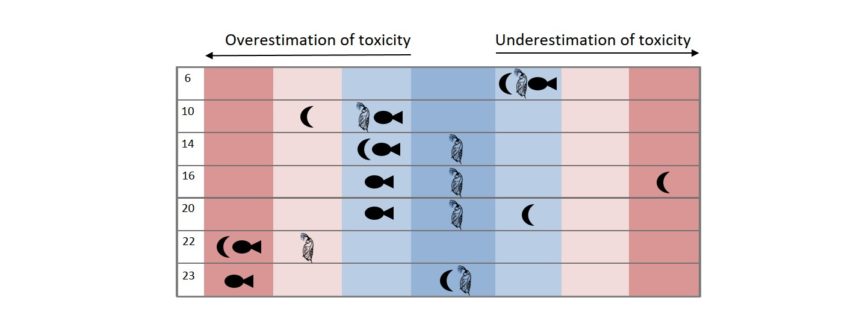New publication: Environmental risk assessment of biocidal products – identification of relevant components…
The recently published work ‘Environmental risk assessment of biocidal products: identification of relevant components and reliability of a component-based mixture assessment’ contributes to the currently ongoing debate on how to perform a mixture assessment in the environmental risk assessment within the authorisation process of biocidal products.
Biocidal products are mixtures of one or more active substances and a broad range of formulation additives. There is regulatory guidance currently under development that will specify how the combined effects of the active substances and any relevant formulation additives shall be considered in the environmental risk assessment of biocidal products. The default option is a component-based approach by which the toxicity of the product is predicted from the toxicity of ‘relevant’ components using concentration addition. Hence, unequivocal and practicable criteria are required for identifying the ‘relevant’ components to ensure protectiveness of the component-based approach, while avoiding unnecessary workload resulting from including by default components that do not significantly contribute to the product toxicity. The present study evaluated a set of different criteria for identifying ‘relevant’ components using confidential information on the composition of 21 wood preservative products. Theoretical approaches were complemented by experimentally testing the aquatic toxicity of seven selected products.
For further information, see the open access publication in Environmental Sciences Europe:
Coors, A., Vollmar, P., Heim, J., Sacher, F., Kehrer, A. (2018). Environmental risk assessment of biocidal products: identification of relevant components and reliability of a component-based mixture assessment. Environmental Sciences Europe 30:3.
The study was performed within a project funded by the German Environment Agency (FKZ 3713 64 417).
For further new publications, see ECT’s publication list.



